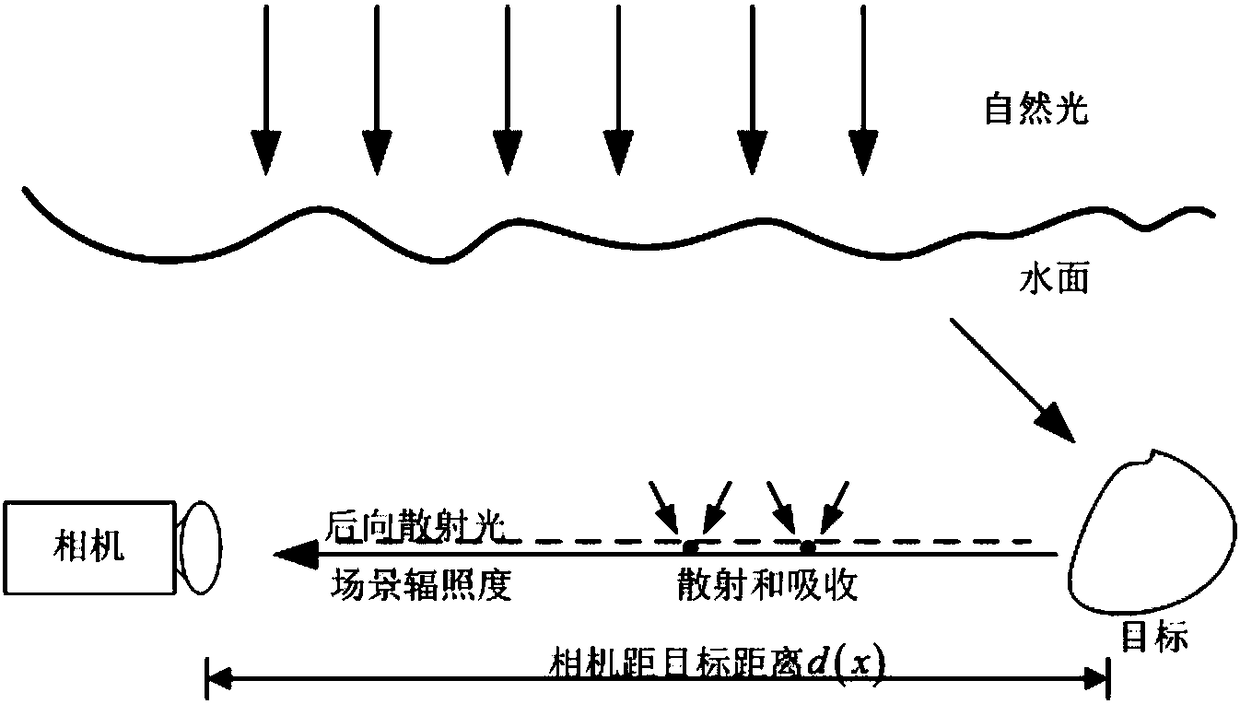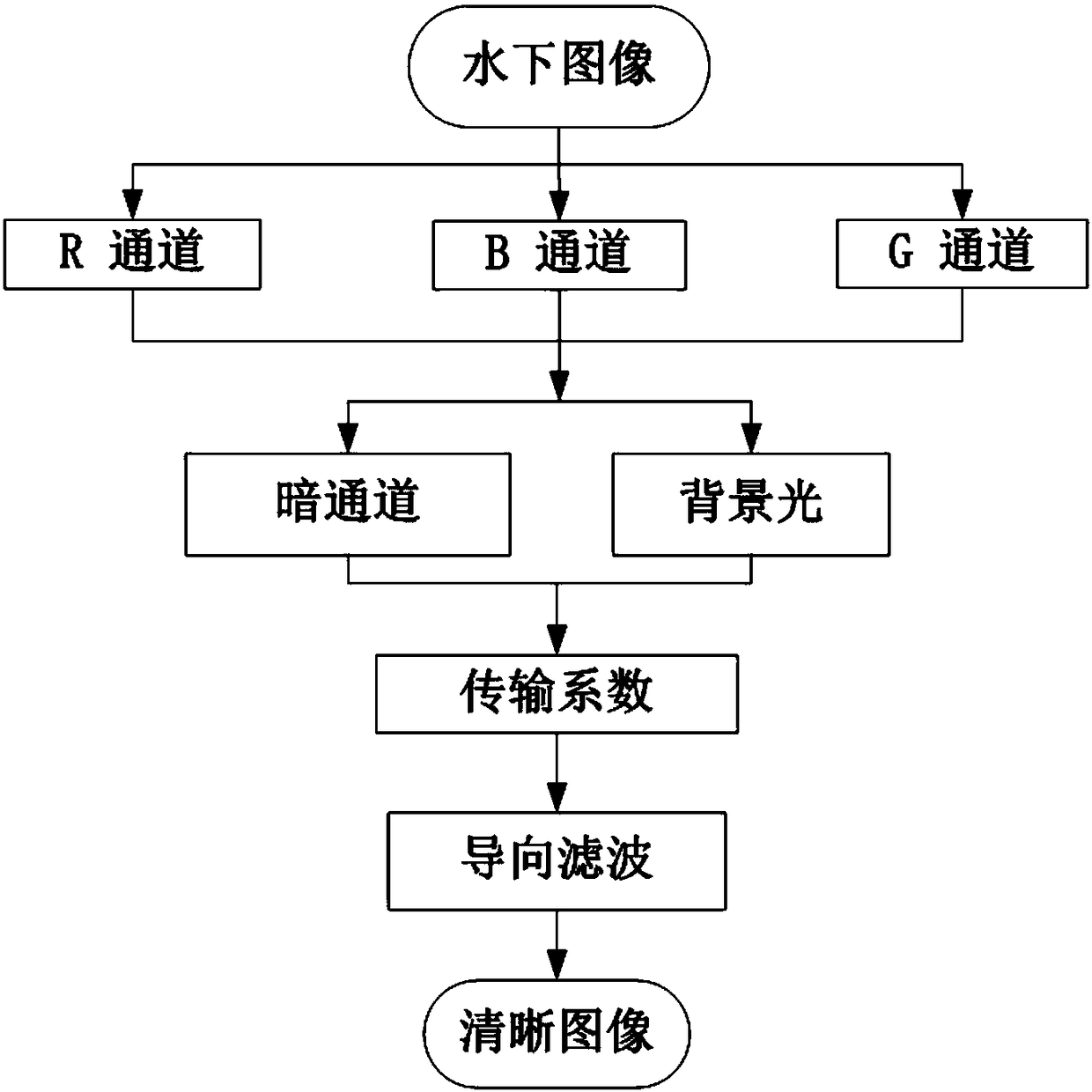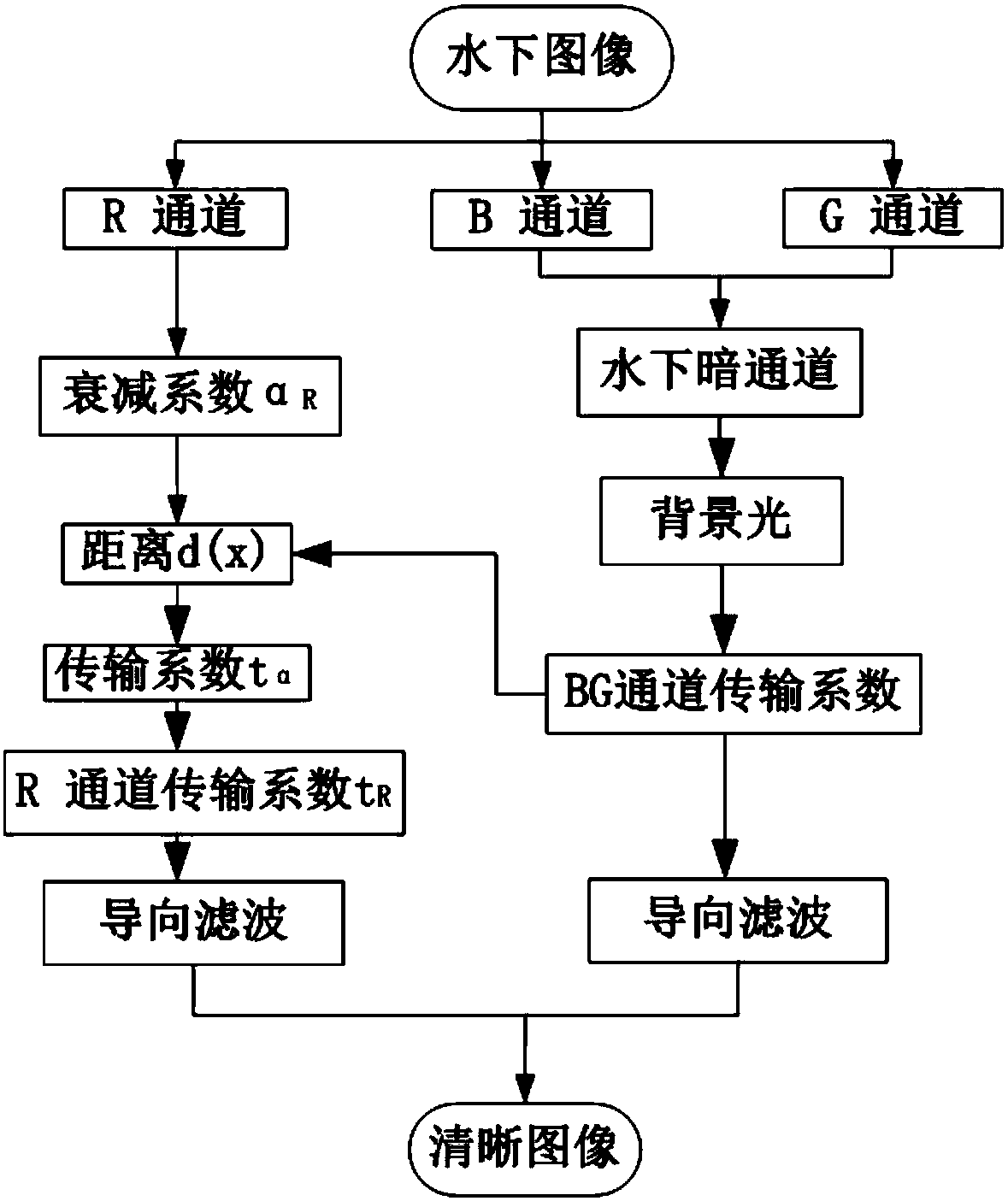Underwater image color compensation method based on electromagnetic theory
An underwater image and color compensation technology, applied in the field of image restoration, can solve problems such as poor image restoration quality
- Summary
- Abstract
- Description
- Claims
- Application Information
AI Technical Summary
Problems solved by technology
Method used
Image
Examples
Embodiment 1
[0062] Embodiment 1 (improved dark channel prior and electromagnetic theory underwater image restoration)
[0063] 1. DCP theory
[0064] McCarney constructs the atmospheric scattering model of light waves under foggy conditions:
[0065] I(x)=J(x)t(x)+A[1-t(x)] (7)
[0066] Among them, I(x) represents the image captured by the camera, J(x) represents the reflected light of the object, which is the required fog-free image, A represents the atmospheric light intensity, t(x) represents the transmission coefficient of light waves in the atmosphere, and represents the reflection of the object The degree of light attenuation by the atmosphere, J(x)t(x) represents the light intensity after light attenuation containing object information, and A[1-t(x)] represents the atmospheric light intensity received by the camera. Equation (7) reveals the reasons for image quality degradation in foggy days. Image dehazing is equivalent to solving J(x) from Equation (7) to obtain a clear image. ...
Embodiment 2
[0121] This embodiment is used to investigate the actual effect of the method in Embodiment 1 on underwater image restoration.
[0122] In order to verify the effectiveness of the method of the present invention, multiple images in different environments were selected for experiments, and compared with the original images and images processed by the other two methods disclosed in the literature. Experimental results such as Figure 4~6 shown. From the experimental results, it can be seen that in different underwater environments, the group b method directly applies the dark channel prior theory to underwater image processing, ignoring the attenuation of light due to the absorption of water, and cannot correctly estimate the underwater environment. background light and transmittance, resulting in inconspicuous processing effects. Although the group c method takes into account the attenuation of light due to the absorption of water, it does not correctly estimate the transmis...
PUM
 Login to View More
Login to View More Abstract
Description
Claims
Application Information
 Login to View More
Login to View More - R&D
- Intellectual Property
- Life Sciences
- Materials
- Tech Scout
- Unparalleled Data Quality
- Higher Quality Content
- 60% Fewer Hallucinations
Browse by: Latest US Patents, China's latest patents, Technical Efficacy Thesaurus, Application Domain, Technology Topic, Popular Technical Reports.
© 2025 PatSnap. All rights reserved.Legal|Privacy policy|Modern Slavery Act Transparency Statement|Sitemap|About US| Contact US: help@patsnap.com



